The Count of Monte Cristo (French: Le Comte de Monte-Cristo) is a novel written by Alexandre Dumas in collaboration with Auguste Maquet. Completed in 1844, it is partly inspired by real events. The novel takes place in France, Italy, and some Mediterranean islands, in the historical period 1815–1839, that is, between the period in which French rule was restored to the monarchy under the Bourbon monarchy, and the reign of the French King Louis-Philippe. The historical setting is an essential element of the book. The events of the film begin on the day that Napoleon left his first island of exile, Elba, to begin the so-called Hundred Days, during which Napoleon returned to power. The events of the novel present sensitive and powerful themes such as justice, revenge, injustice, mercy, and others. The protagonist, Edmond d’Auntis, is a 19-year-old sailor, the captain’s assistant on the ship Pharaoh, who arrives in Marseille to propose to his lover Mercedes the next day. He is betrayed by two jealous friends. Because of this betrayal, Dontes was tried as a traitor to France and a conspirator with Napoleon Bonaparte, and was imprisoned in the prison of the Chateau d’Eau near Marseille. After 14 years, he was initially in despair and then hardened by his colleague, Father Faria, and was able to escape in the end and seize the treasure that Father Faria had hidden and left on the island of Monte Cristo. He became rich and powerful and began his journey of systematic revenge on those who were the cause of his imprisonment.
The novel is one of the most famous of Alexandre Dumas’s works, along with the novel The Three Musketeers, both in France and abroad. It was originally published in a newspaper in two parts, the first part in 1844, and the second part in 1846.
The Count of Monte Cristo
د.ا4.97د.ا5.68
Arabic/English
An epic novel of injustice, revenge, and redemption, narrating the journey of a young man who was deceived and unjustly imprisoned, only to return as a vengeful man with extraordinary wealth and power.
| Categories: | Literature, Novels, stories, History of literature, World literature |
|---|---|
| Tags: | Novels, philosophy, stories, World Literature |
| Author | |
|---|---|
| Year |
You may also like…
-
The Strange Case of Dr. Jekyll and Mr. Hyde
د.ا4.97Arabic / English
It is an exploratory novel of the dark side of human nature, where Dr. Jekyll, the idealistic medical scientist, is transformed into the monstrous Hyde character through his use of a chemical formula, reflecting the struggle between good and evil within the human soul.د.ا5.68 -
The Old Man and the Sea
د.ا4.97Arabic/English
A symbolic novel that depicts the struggle of man with nature through the story of an old fisherman struggling to catch a giant fish in the open sea.د.ا5.68 -
Treasure Island
د.ا4.97Arabic / English
It is a classic adventure that tells the story of the search for buried treasure full of intrigues and pirates.د.ا5.68 -
Stefan Zweig’s Letters
د.ا4.97It is a collection of correspondence that reveals Zweig’s deep thoughts and reflections on life, love, and literature, in light of the transformations of his era.
د.ا5.68
Related products
-
My journey from doubt to faith
د.ا2.13I refused to worship God because I was immersed in worshipping myself and admired the flash of light that began to flash in my mind with the opening of consciousness and the beginning of the awakening from the cradle of childhood.
This psychological state was behind the controversial scene that recurs every day. I also missed the origins of logic and I am dealing with logic and I did not realize that I am contradicting myself as I recognize the Creator and then say who created the Creator and make him a creature at the time when I call him a creator, which is sophistry itself.
Moreover, to say a first cause of existence requires that this cause must exist in itself and not dependent or need others to exist. If a cause needs a cause, this makes it one of the causal links and does not make it a first cause.د.ا3.55 -
The Da Vinci Code
د.ا8.52- The Da Vinci Code is a 2003 mystery thriller novel by Dan Brown. It is Brown’s second novel to include the character Robert Langdon: the first was his 2000 novel Angels & Demons. The Da Vinci Code follows symbologist Langdon and cryptologist Sophie Neveu after a murder in the Louvre Museum in Paris entangles them in a dispute between the Priory of Sion and Opus Dei over the possibility of Jesus and Mary Magdalene having had a child together.
د.ا10.65 -
The Forty Rules of Love
د.ا10.65is a novel written by the Turkish author Elif Shafak,[1][2][3] Her interest in writing this book was influenced by the degree she received in Gender and Women’s Studies.[4] The book was published in March 2009.[5] It is about the Persian mystic poet Maulana Jalal-Ud-Din, known as Rumi and his companion Shams Tabrizi.[6][7] This book explains how Shams transformed a scholar into a Sufi (mystic) through love.[8] More than 750,000 copies of this book were sold in Turkey and France
د.ا12.78 -
Flower swordsman
د.ا7.10The Swordsman of Flowers is a collection of prose texts that combines irony and sadness and expresses issues of freedom and human oppression
د.ا8.52 -
What’s left is yours
د.ا2.13Ghassan Kanafani is a Palestinian novelist, storyteller, and journalist, and is considered one of the most famous Arab writers and journalists in the twentieth century. His literary works, including novels and short stories, were deeply rooted in Arab and Palestinian culture
د.ا3.55 -
Returning to Haifa
د.ا2.13Ghassan Kanafani is a Palestinian novelist, storyteller, and journalist, and is considered one of the most famous Arab writers and journalists in the twentieth century. His literary works, including novels and short stories, were deeply rooted in Arab and Palestinian culture
د.ا3.55 -
About men and guns
د.ا2.13Ghassan Kanafani is a Palestinian novelist, storyteller, and journalist, and is considered one of the most famous Arab writers and journalists in the twentieth century. His literary works, including novels and short stories, were deeply rooted in Arab and Palestinian culture
د.ا3.55 -
Pulse
د.ا12.00A novel that sheds light on the internal conflict between mind and heart, and addresses themes of love, sacrifice, and the search for self in a world filled with challenges.

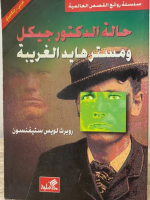
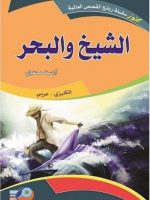
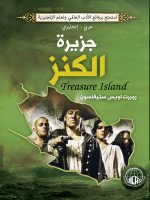

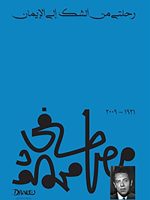
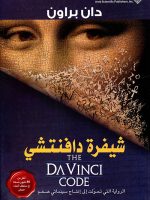
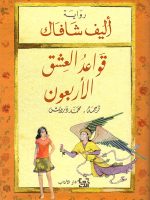

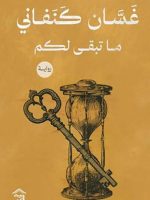


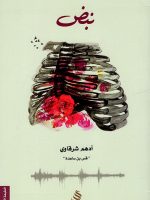
Be the first to review “The Count of Monte Cristo”